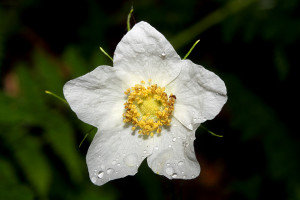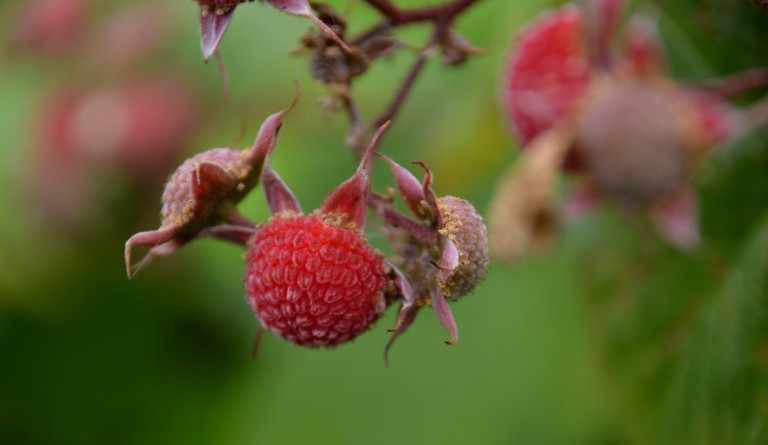More edible nature in Seattle: Thimbleberry edition
Note: We recently re-posted a blog item from 2011 about the native and edible salmonberry. The popularity of that post gave us the idea to do similar profiles for many of the common native plants, edible or not, that we use in our restoration program. Today is Part 2 of that effort, profiling thimbleberry.
The headlines go to the blackberries, the raspberries, even the salmonberries. But let’s not forget about their humble cousin the thimbleberry, which is coming into season now. At a glance, the fruits of these natives look like raspberries with a red-to-bright-red color. They are in the same family as the prolific invasive species Himalayan blackberry, and their vigorous growth makes them a great, edible substitute when you want to remove the non-native.
The berries of this plant can vary from quite sweet to rather bland, depending on the growing site. They were eaten by most native people of the Pacific Northwest, both raw and in a dried form. Some tribes mixed them with raspberries to dry into cakes. Today, the plant can most commonly be found in open clearings and forest gaps, typically at lower elevations. It also is successful in urban environments and can frequently be found in the city along roads and sidewalks.
In all likelihood, these fabulous natives are somewhere nearby you right now. Here are a few quick facts to help you identify thimbleberry at a glance. Click on the links below for photos.
Scientific name: Rubus parviflorus. This is a native relative of the non-native Himalayan blackberry (Rubus armeniacus), making it a great substitute in planting for restoration and gardening.
General info: Thimbleberry is a deciduous shrub with a tall upright stem. It is native throughout much of western North America, including nearly 20 states and 4 provinces ranging from Alaska to New Mexico. They propagate using an extensive network of rhizomes, giving them the tendency form thickets. A mature plant can surpass 6 feet in height.
Leaves: Among its most recognizable characteristics is the plant’s large, fuzzy, soft, maple-shaped leaves, which can be nearly 10 inches in diameter and have 3 to 7 lobes.
Stem: Unlike many of its relatives in the genus Rubus, thimbleberry does not have thorns on its stems, though young growth can be hairy.

Berries: Like others in the genus, their fruits are not a true berry but rather an aggregate of tiny drupes. The fruits of thimbleberry most resemble raspberries but are more physically delicate. They are arranged around a central core and harvesting involves (carefully!) removing the drupelets from the core, leaving a hollow fruit that resembles a thimble.
Next time you see them ripe in the woods, take a bite!
Like this post? Comment below to request the next native plant profile.
Want to help (make room for more thimbleberries)? Volunteer with our restoration program!


